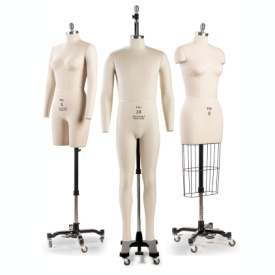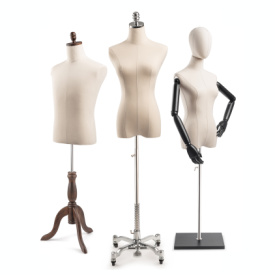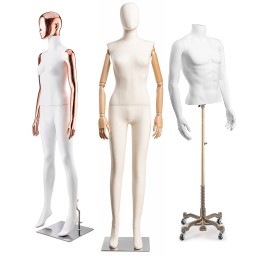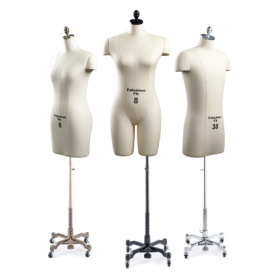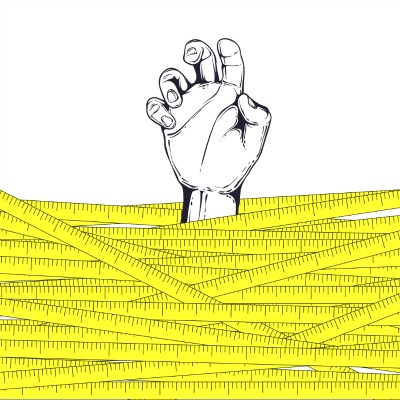

So you have decided to up your game with a professional dress form? Now it's time to get down to the numbers. The following are the measurements which we have used to create our professional dress forms. The first three of which (the bust, waist and hips), are the most important. All you need for this is a tape measure, pen, paper, perhaps a mirror, and most importantly, a bit of honesty.
While we do produce a wide variety of dress form sizes and styles, it is very common that your measurements will not line up exactly to one of our specific sizes. In these instances, we would advise in getting the smaller form rather than the larger form. The reason for this is that while you can always pad a smaller form up in those areas where your measurements are larger, you can never pad the form down (in those areas where you are smaller). For instance, if your bust is close to a size 6 while your waist and hips are more like a 10, you would probably do best with the size 6 dress form and just pad up the waist and hips as needed. With the size 10 you would never be able to get the bust down to size. If you need it, we do carry a fantastic and complete padding kit from our sister brand, Fabulous Fit. These kits can be added to the purchase of a dress form (on the form's product page) for $79 or purchased separately (here) for $85.
Once you have your measurements, please feel free to use our Size Finder software at the top of the website which can suggest the perfect size for you. You can also reach out to us at any time with any questions you many have. We are here to help.
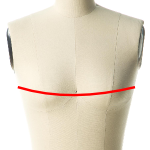
1. Bust
The bust measurement is calculated by taking the circumference (front through back) of the fullest area around the bust. This is usually where the nipples are. Our dress forms are made with a pin in the center of the bust (visible in this photo) to mark the horizontal degree of this measurement.
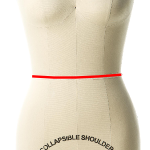
2. Waist
For the waist, you would need to take the circumference of the narrowest area around the waist. This is usually where the belly button is. Our dress forms all come with a secure ribbon around the waist area (hidden under the red line in this photo) which makes for a great draping guide. Exhale before this measurement.
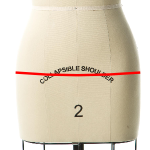
3. Hips
The hips measurement is taken from the circumference of the fullest area around the hip section. For some people this is where the hip bones protrude while for others it is slightly below.
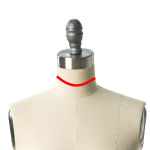
4. Neck
The neck measurement is the circumference of around the neck along its height.

5. Shoulder
The shoulder measurement is that of a single shoulder measured from the base of the neck to where the shoulder starts tapering off. Here too, our dress forms are made with a nice seam along this shoulder line for a draping guide.

6. Bust Spread
The bust spread, also know as "apex to apex", is the distance between the fullest section of one side of the bust to the other (usually nipple to nipple).

7. Back Width
The back width is taken as the horizontal distance of the widest section of the back.

8. Front Length
The front length measurement is the vertical distance between the base of the neck and waist line - all on the front of the torso. Our dress forms have a seam running along this line for guide use during draping.

9. Back Length
Similar to the ‘front length’, the back length measurement is the vertical distance between the base of the neck and waist line - all on the back of the torso. Here again, our dress forms have a seam running along this line to use as a guide during draping.
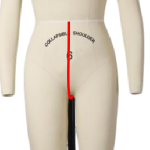
10. Crotch
The crotch measurement is taken starting from the center of the waist on the front, down through the crotch area to the back, and up to the center of the waist on the back. Our forms have pins in both the center of the waist in the front and the center of the waist in the back. This measurement, as well as those that follow, are only pertinent to our full body professional forms.
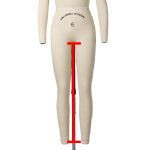
11. Inseam
The inseam measurement is taken from the bottom of the crotch (in between the legs) down through the ankle area.
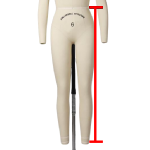
12. Outseam
The outseam measurement is the distance between the waist and the ankle area. This is very similar to the ‘inseam’ only that it begins higher up at the waist.
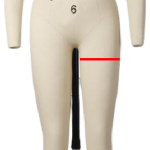
13. Thigh
The thigh measurement is the circumference around the fullest area of the thigh.

14. Knee
The knee measurement is the circumference around the kneecap.
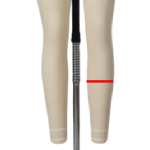
15. Leg
The thigh measurement - occasionally referred to as the calf measurement - is the circumference around the fullest area of the leg.
